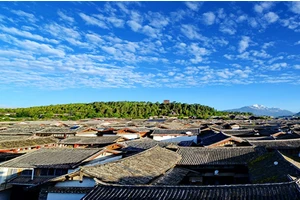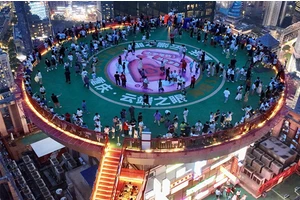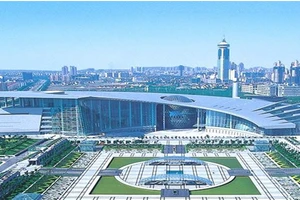He' nan travel alliance
1. The birthplace of the four ancient human civilizations.
(1) the gift of the Nile-ancient Egypt
Egypt is located in the northeast of Africa, bordering the vast Sahara desert in the west. The Nile River, which runs through the north and south, floods regularly every year, depositing a fertile land. The special natural conditions made Egypt have a fairly developed civilization in ancient times. The ancient Egyptians first began social union and formed public power. Each consortium-state has its own name, capital, army, regime, dialect and totem, forming the embryonic form of an independent country. The ancient Egyptians also invented bronzes, created characters, mastered high knowledge of astronomy and geometry, and built magnificent temples and pyramids. The history of civilization in ancient Egypt lasted more than 3000 years, and it is a pearl of ancient human civilization.
(2) Mesopotamia, the Kingdom of Babylon.
"Mesopotamia" is an ancient Greek word, which means "the place between two rivers". These two rivers are Euphrates and Tigris. The civilization of the two river basins can be traced back to 6000 BC. The Sumerians invented cuneiform here. King Babylon of Cuba promulgated the code of hammurabi, the first written law in the world. The Chaldeans built a "hanging garden" here, which is one of the seven wonders of the ancient world. In ancient times, people in the two river basins used "sexagesimal method" to calculate time, "360-degree circle" and "December of a year" and "seven days a week" systems, which have been in use ever since.
(3) Halaba culture-Indus civilization
Ancient India is one of the cradles of human civilization. They have made original contributions to human civilization in literature, philosophy and natural science. Here are the immortal epics Mahabharata and Ramayana. Here is the origin of logic, The Theory of Inming. Here, the universal counting method and the number symbols from 0 to 10 have also been created, forming Buddhism with strong vitality.
(4) Yellow River culture-the civilization of ancient China.
In the world, ancient Egypt, ancient Babylon, ancient India, and ancient China, which developed in the Yellow River valley, were the first to enter slave society from primitive society. These four ancient civilizations in Asia and Africa are called the cradles of world civilization. The Yellow River Basin is the cradle of Chinese civilization. The ancestors of the Chinese nation led clan and tribe alliances to break through difficulties and explore territory in this land, and created dazzling Yellow River culture while transforming themselves. As the core of Chinese civilization, the Yellow River culture dominates the history of world civilization with its bold spirit, indomitable will and strong vitality.
Heluo culture, which developed in central Henan, is the representative of the Yellow River culture. The Neolithic period, represented by Peiligang culture, Yangshao culture and Longshan culture, showed the development of material civilization and the progress of spiritual civilization, reflecting the dawn of human civilization. From the establishment of the Xia Dynasty, the first dynasty in China's slavery society in the 21st century BC, to the Northern Song Dynasty in the prosperous period of feudal society, more than 200 emperors in more than 20 dynasties established or moved their capitals in Henan. On the land of the Central Plains, the footprints of the struggle of the ancestors and sages of China are left everywhere. For this reason, the Yellow River cultural symbol "He Tu Luo Shu", "Eight Diagrams and Book of Changes" began here, the Chinese ancestor philosopher "Three Emperors and Five Emperors" was born here, and the oldest cultures of Taoism, Confucianism, Legalism and strategists in China all originated here. Among more than 8,000 clans in China, more than 1,500 surnames originated in Henan (nearly 70% of the top 100 surnames originated here) and then flowed in all directions. If the Yellow River culture is a symbol of ancient Chinese civilization, Heluo culture, which developed on the land of the Central Plains, is the concrete embodiment of the essence of the Yellow River culture. Heluo culture has a strong national character and also has the characteristics of world significance.
2. The transitional zone has unique characteristics of resources.
Geomorphological landscape is the main part of landscape tourism resources. In today's world with the theme of "returning to nature", the discovery of special geomorphological landscape units often forms a new hot spot of tourism. The landform of Henan province is located in the east-west transition zone of the first landform step in China and the north-south transition zone of the central mountain system. Its climatic characteristics belong to the transitional type between north subtropical zone and warm temperate zone. The unique geographical conditions determine that the landscape of Henan has the characteristics of the transitional zone with the beautiful scenery of the south of the Yangtze River, the magnificent scenery of the north and the rugged fusion of different styles in the western Yuan Ye, and it is unique among the landscape tourism resources in China.
(1) The majestic Taihang Mountain rises from the ground.
Taihang Mountain, the mountain rises from the ground and overlooks Yuan Ye, forming a landform step with a drop of 1,000 meters. Due to the cutting of water flow for millions of years, mountain and canyon landforms, valley landforms, Danxia-like landforms, peak forests and peaks, and monument landforms constitute the main body of natural landscapes. Taihang scenery is based on grandeur, and its cliffs are rough and lines are vigorous, unadorned, unobtrusive and simple. The ancients said: "Taihang Mountain is majestic and beautiful, with a steep peak, which is even to the sky."
(2) the steep scenery.
The different scenery is praised for its precipitousness. Its peaks and ridges, which are shaped like spikes, are winding and green, and there are jade pillars standing upright, long swords leaning against the sky and stone waterfalls rolling. In the depths of the mountains, there are often ancient volcanic magma spewing, like jade pillows lying on top of each other, like trunk sucking water, like waves surging; In the depths of the dense forest, there are many ancient and rare rare rare birds and animals, exotic flowers and herbs hiding. Due to the particularity of climate, crustal movement and material composition in the natural transition zone, granite peaks and ridges, rock bullets, volcanic lava, caves, underground rivers, hot springs and nature reserves known as the treasure house of biological genes are the essence of Funiu and Dabie natural landscapes.
(3) Funiu Mountain, which summarizes the crustal evolution of China.
Funiu Mountain, Henan Province is located at the front of continental plate collision in the central orogenic system of China, and its tectonic position is extremely special. There are "crustal suture lines" to locate the subduction and collision of ancient plates; There are "ocean floor fragments" that mark the demise of the ancient ocean; There is an "ancient platform dome" in the early stage of crustal formation; And the scarred remains left by dinosaurs when they dominated the earth. ..... Funiu Mountain Geological Corridor is a world-class geological park with rich contents and vivid images. It also preserves the most wonderful parts of the geological structure in the orogenic belt, including the sedimentary fragments of Proterozoic spreading basin, the main body of Paleozoic rifted trough construction, the mixed ophiolite of Indosinian plate subduction trench and ocean fragments representing the existence of ancient Qinling Ocean ... It is a rare and ideal place to study the history of crustal deformation.
(4) Baotianman, a treasure house of biological genes in the transitional type between warm temperate zone and subtropical zone in China.
Baotianman, located in the hinterland of Funiu Mountain Range, is a typical transitional forest ecological zone between warm temperate zone and subtropical zone in China, and it is a unique treasure house of biological genes in transitional areas. A relatively complete biota in the transitional zone is collected and preserved here. More than 2,900 species of wild plants have been identified. There are more than 260 kinds of wild animals and more than 3000 kinds of insects. Among them, rare and precious national key protected species account for more than 10%. There are also various medicinal plants, wild flowers, wild fruits, wild vegetables and endangered wild animals.
In a word, Taihang Mountain Nanlu and Funiu-Dabie Mountain areas have become the most promising areas in Henan Province with their unique tourism resources. It can be predicted that the development of top-quality tourism projects with "returning to nature" as the main line and integrating scientific research, exploration, leisure and sightseeing will surely promote the rapid development of tourism in the Central Plains.
3. Patriotism education base
(1) Dabie Mountain, a red base area
Dabie Mountain in southern Henan was one of the important bases of China revolution during the period of China's new-democratic revolution. Revolutionary armed forces such as the Red 25th Army and the Red Fourth Army were born here. In 1947, Liu Bocheng and Deng Xiaoping led the Shanxi-Hebei-Shandong-Henan People's Liberation Army to advance behind enemy lines, and the creation of Dabie Mountain base area marked the transition from strategic defense to strategic attack in the War of Liberation. Xinxian County, located in the hinterland of Dabie Mountain, was once the seat of the Soviet government of Hubei, Henan and Anhui. There are more than 80 revolutionary remains in the territory, such as the former site of the Hubei-Henan-Anhui border government, the former site of the Soviet Aviation Bureau of the Hubei-Henan-Anhui-Jiangsu Special Zone, the former site of the arsenal in the Hubei-Henan-Anhui border region, and the Lenin Advanced School in the Hubei-Henan-Anhui border region. The former site of the famous Hubei-Henan-Anhui revolutionary base is a national key cultural relic protection unit.
(2) The revolutionary holy land-Zhugou
Zhugou Town, Queshan County, located in the hinterland of Tongbai Mountain, was the Anti-Japanese War Command Center of Henan Provincial Committee of the Communist Party of China during War of Resistance against Japanese Aggression period. (In November 1938, the Central Committee of the Communist Party of China Central Plains Bureau was established in Zhugou, with Comrade Liu Shaoqi as its secretary). Zhugou base area trained a large number of party and government cadres for the anti-Japanese war, and was once known as "Little Yan 'an" in the world. At present, there are revolutionary relics such as the former site of the Central Committee of the Communist Party of China Central Plains Bureau (national key cultural relics protection unit), the former site of Comrade Liu Shaoqi, the former site of Henan Provincial Committee of the Communist Party of China, the former site of Zhugou Military and Political Teaching Team, the former site of Henan Fourth Army Division Command, the former site of Henan Fourth Army Division Construction Bank, the former site of Henan South Administrative Office, Zhugou Revolutionary Martyrs Cemetery, etc.
As a famous historical and cultural province in China, Henan Province is rich in tourism resources and numerous tourism companies. The following are some travel companies with good reputation in Henan:
Henan CTS: Henan CTS is one of the largest travel agencies in Henan Province and has many years of experience in tourism services. They provide various types of tourist routes, including cultural relics, natural scenery, folk customs and so on. Their tour guide team has high professional quality and good service attitude, which is well received by tourists.
Henan Youth Travel Service: Henan Youth Travel Service is a company focusing on youth travel. They provide personalized travel routes and services suitable for young people and independent travelers. Their tour guide team is young and energetic, and can communicate with young people better.
Henan International Travel Service: Henan International Travel Service is a state-owned travel agency with rich tourism resources and professional service team. They provide all kinds of tourist routes, including domestic tours, outbound tours and free travel. Their tour guide team is experienced and can provide all-round services for tourists.
Henan Air Travel Agency: Henan Air Travel Agency is a company specializing in air travel, which provides various types of air travel products, including air ticket reservation, hotel reservation and tourist routes. Their service is fast and convenient, and the price is reasonable, which is trusted by tourists.
Kang Hui Travel Agency in Henan: Kang Hui Travel Agency in Henan is a professional travel agency, which provides all kinds of travel routes and services, including domestic travel, outbound travel and free travel. Their tour guide team has high professional quality and good service attitude, and can provide all-round services for tourists.
The above are some travel companies with good reputation in Henan. They all have many years of experience in tourism services, providing a variety of travel routes and services to meet the needs of different tourists. When choosing a travel company, you can choose according to your own needs and budget, and you can also make a decision by looking at the evaluation and word-of-mouth of other tourists.






